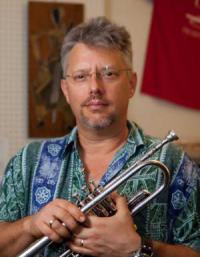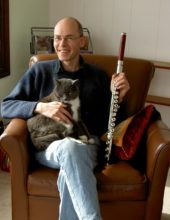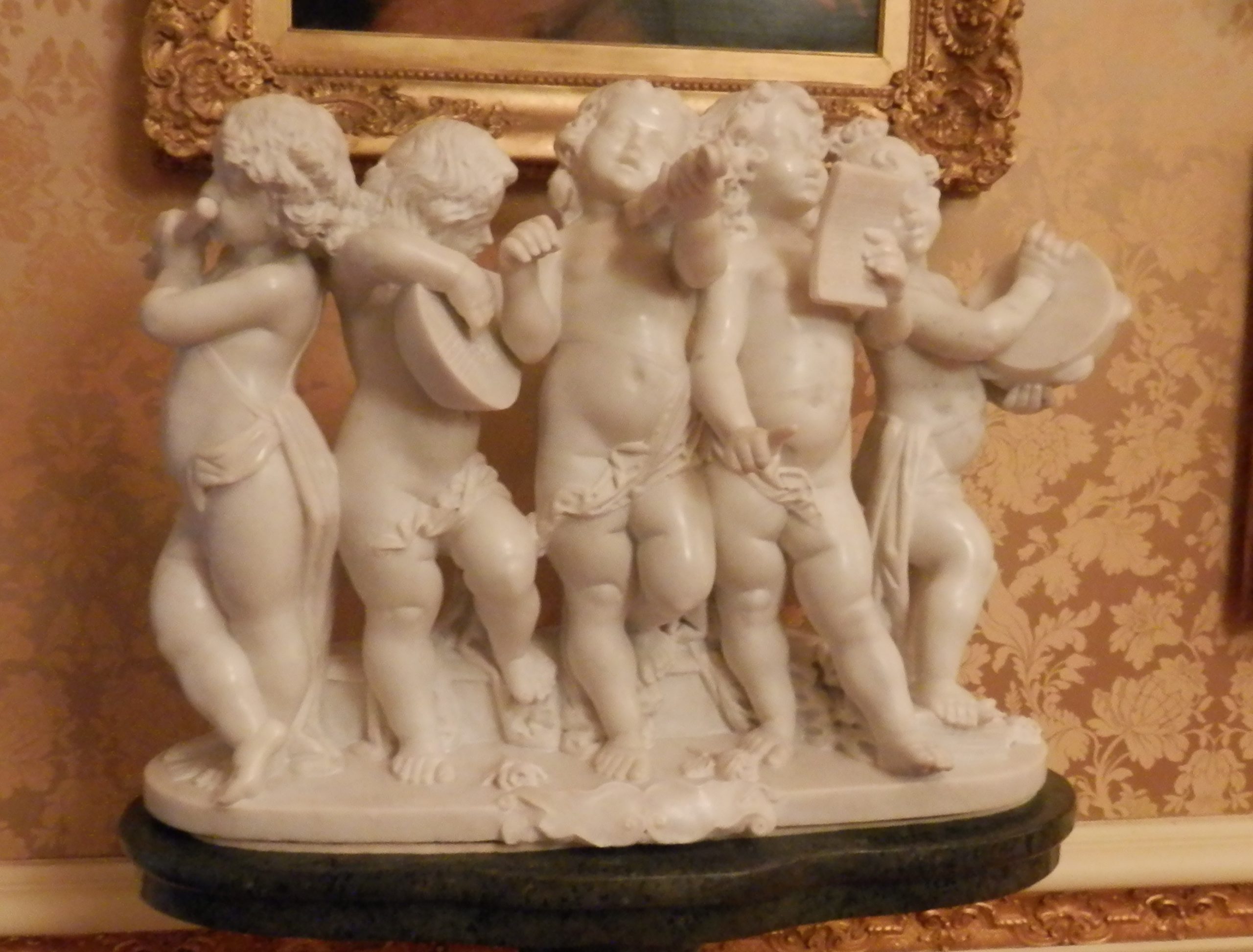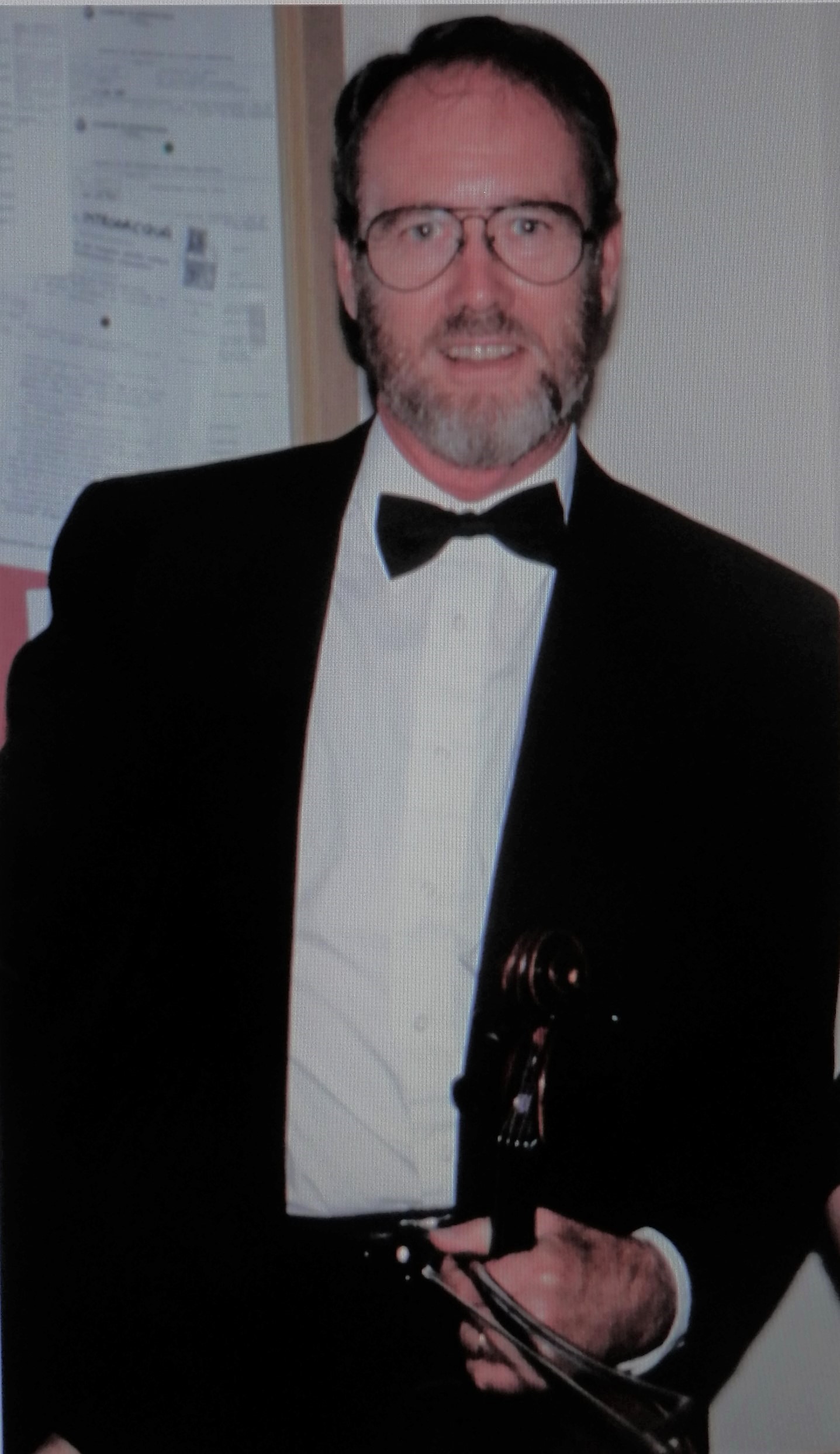PIANO & MIXED ENSEMBLE
Mixed Trios:
Ambitions (12/28/21) for clarinet, cello and piano – 10’45”. It is a funny thing about ambitions. Sometimes what one wishes to achieve is clearer in one’s head than it is in reality. This piece plays with that ambiguity. The first movement, Persuasive Oratory, suggests clarity and directness of expression, but the reality is chromatic with a tonality that does not match its key signature. The funny title aside (How to Be-a Scherzo and Tri-a), scherzo and trio movements have traditionally followed a strict form. How can one alter and update this form without losing its essence? The final Jazzy Jig sounds like a jig for 32 measures. Then, the clarinet does a rising slide and all bets are off. Is this really a jig? Probably not, but it is a rousing finale. MIDI recording.
Trio for Oboe, Clarinet and Piano (5/6/20) 15’00”. The work is in four movements. The first movement begins with an Adagio. A more heavily scored Allegro follows leading to a prolonged cadenza-like duet for the winds based on previous themes. The second movement is a five-part rondo – ABACA. It is characterized by an upbeat opening in compound duple meter. The third movement is slow, quiet and contemplative. The fourth movement is a five-part rondo that begins with a heavily scored, repetitive pulsing from the piano, a sustained part for clarinet, and a rhythmically active part for the oboe in a high tessitura. MIDI recording.
A Color Palette (9/2/14) for violin, clarinet and piano – 13’00”. Colors suggest different moods. “Alizarin Crimson” is a bold, punchy color suggesting drive and excitement. “Prussian Blue” is cool and contemplative. “Burnt Sienna” is solid and earthy. These were the inspiration for the three movements in this work.
Live performance. The work was premiered at the Southeastern Composers League Forum in Lexington, Virginia, at Washington and Lee University on March 24, 2017, by Noah Karkenny, clarinet, Jaime McArdle, violin, and Anna Billias, piano.

Anna Billias, piano
Acadia Trio (3/18/14) for clarinet, viola and piano – 11’40”. This piece pays tribute to Acadia National Park. It is one of the most beautiful of the national parks in the eastern United States. MIDI recording.
Somber Saturdays (6/2/13) for alto flute, bass clarinet and piano; (5/14/18) Somber Saturdays [with trumpet] – 8’00”. This work was started on May 25, 2013, the morning of my mother’s memorial service. She was 101. MIDI recordings.
Youthful Spirits (1/25/16) for clarinet, cello and piano – 8’00”. Youth often see the world as alive with new adventures. It is that spirit that I wished to capture in this work. The opening allegro is a cheerful setting with varied meters. The two sections appear in various guises to create variety, and the asymmetry of the sections makes the mood especially jaunty. The second movement is very slow. The mood is both calm and leisurely. The finale is a straight-forward march. MIDI recording.
Variations (6/12/15) for violin, clarinet and piano – 4’10”. “Variations” is based on an eight-measure, original theme in C major. There are eight variations, divided into four groups: the theme and first two variations, the third variation, the fourth through sixth variations and the seventh and eighth variations. After this the theme returns with a very short codetta. MIDI recording.
Beyond the Café (1/19/13) for violin, bassoon and piano – 6’00”. This is a light-hearted work expressing activities observed from a seat at an open-air restaurant. The activities themselves are of little importance. It is simply the pace of life. MIDI recording.
Sonatina for Three Instruments (2012) for clarinet, viola and piano – 8’40”. Sonatina for Three Instruments begins with “Misplaced Rondo” in which the principal theme is not the first theme heard, but the second. The overall form is a seven-part rondo with introduction. The other two movements need little explanation. The “Interlude” is a simple ternary slow movement, and “Rhythmic Dance” is a sectional form. MIDI recording.

Blue/Rambliu’/Bear available for trumpet/flugelhorn/piccolo trumpet, cello and piano (1989) – 9’10”. The title is in three parts. Blue is both a color reference and a cool feeling because of the coolness of water and of ice. Here, however, there is also an unsettled, mysterious feeling at work. Ramblin’ is a short set of variations on a folksong, “Ramblin’ Gambler.” Bear is so-named, in part, because it is difficult to play, especially making real demands on the trumpet player.
Live recording. Paul Morton, trumpet, Susan Morton, cello, and Kevin Ayesh, piano, premiered Blue/Ramblin’/Bear.
Paul Morton, trumpet
“Pyritic Obsession” (1982) for flute, viola and piano – 7’00”. Not currently available.
Live recording. Premiered at the dedication of the Fine Arts Auditorium at Coastal Carolina Community College on May 15, 1982, by Clifford Tretick, flute, Hugh Partridge, viola, and Michael Daugherty, piano.
Clifford Tretick R. Michael Daugherty


Hugh Partridge
Mixed Quartets:
Mood Rondo (4/20/23) for quartet of flute clarinet percussion and piano – 7’00”. The form of the piece is roughly that of a seven-part rondo in which the opening theme is interrupted by several contrasting themes but reappears between them. However, my focus was not on form but on emotional impact. Each section creates its own mood. For instance, the sections with tom-toms are tense compared to the lighter, more lyric sections featuring vibraphone. Overall, the work proceeds from darker to brighter emotions. MIDI recording.
City Life (1/5/18) for clarinet, violin, cello and piano – 5’30”. Life in cities and their neighboring suburbs is both hectic and somewhat repetitive. Daily tasks, whether work or home related, require a certain diligence and the ability to adapt quickly. In this piece, hectic elements often overlay steady, straight-forward melodic patterns. The steady melodies represent diligence in the face of varied conditions. Sometimes there are moments of joy or brief respites of peace, but the pace of life continues. The pace of life itself may be what is attractive about city life. It makes the day-to-day routine worth the effort. MIDI recording.

From a visit to the Flagler Museum in West Palm Beach
Mixed Quintets:
Strawberries at Center Court (7/3/16) for flute, oboe, clarinet, trumpet and piano – 5’50”. The title, of course, indicates Wimbledon. I composed this work during the 2016 competition, shortly after the Brexit vote. I’ve always been a little amazed that the general populace keeps going with the same sense of well-being regardless of political circumstance, perhaps explaining why this work is upbeat. The relation of the work to Wimbledon is simple. The tournament is a celebration, only briefly interrupted by more somber thoughts of the world beyond. MIDI recording.
Obstination (1/15/16) for flute, horn, violin, cello, and piano or flute, clarinet, violin, cello and piano – 10’00”. I made up the term “obstination” to refer to a state of pointed and fully intentional obstinacy. Conflict and dramatic tension result from “obstination,” even if compromise is in everyone’s best interest. MIDI recording.
Mixed Octets:
Citta di’Udine (2010) for flute/piccolo, B-flat clarinet/bass clarinet, percussion, piano and string quartet – 7’40”. This work is based largely on memories of a stay in Italy in 1975. I was staying with friends in a villa in the hills about five miles from the city. We were young, and it was the first time in a foreign country. Everything was an adventure, whether it was searching for portabella mushrooms in the forest or buying bread and cheese in the open market. This piece attempts to capture the joy of youth and adventure when everything was new, and life appeared to have no limits. MIDI recording.
Mixed Nonets:
Reflections in a Time of Pandemic (7/5/20) for eight winds and piano – 6’30”. The mood of the music oscillates between unease and fear. From the outset, it falls short of being peaceful. A fugal theme is interrupted by loud, rapidly rising gestures that add to the unease. The effort to maintain calm becomes more complicated, as it is overlain by rising half notes and eighth notes oscillating in half steps. The third iteration of the fugal theme fights pairs of eighth-note chords, a return of the piano ostinato, and rising sixteenth-note scales that lead to dissonant resolutions. The fourth statement is not fugal and begins calmly against descending sixteenth-note gestures. The theme is stated chordally, and the mood remains calm, even against the piano ostinato and oscillating half steps. MIDI recording.
